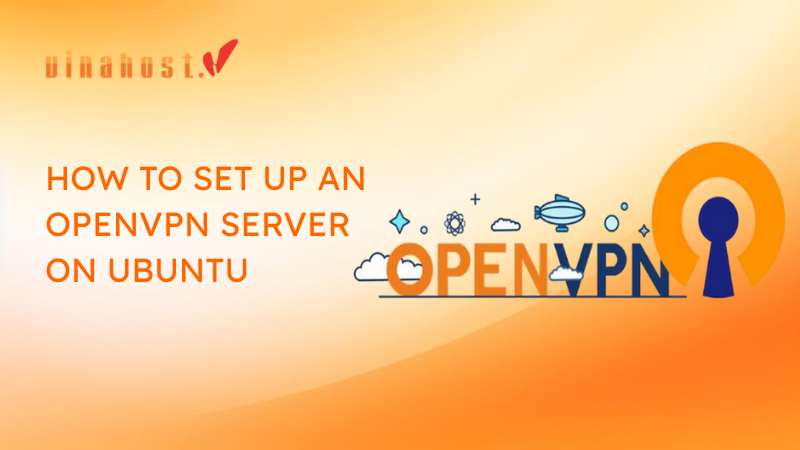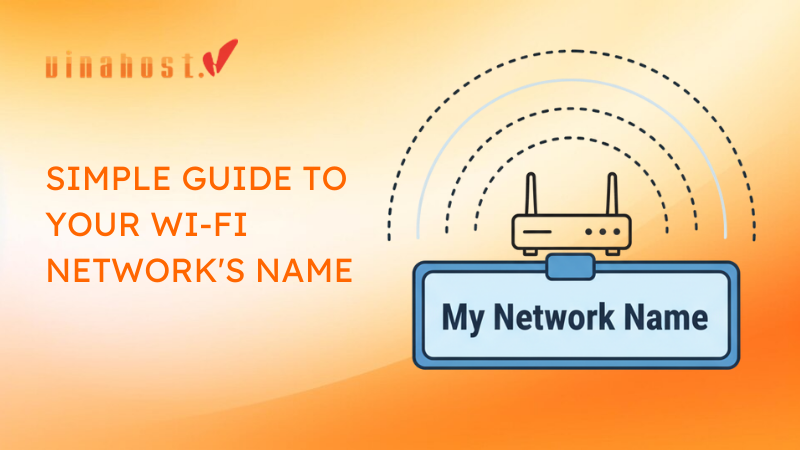Have you ever connected to the Wi-Fi at a coffee shop and felt a little uneasy, wondering who might be snooping on your data? Or been frustrated when a streaming service blocks you because you’re in the wrong country? It’s time to take back control of your internet connection.
Building your own Virtual Private Network (VPN) is the ultimate act of digital empowerment. It creates a secure, encrypted tunnel from your device to a server you control, giving you enhanced privacy on public networks, secure access to your home files from anywhere, and the freedom to bypass annoying geographic content restrictions.
In this guide, we’ll walk you through the entire process of setting up your own rock-solid VPN server using OpenVPN, the battle-tested, highly secure, and completely open-source solution. Let’s build your personal digital fortress.
1. Planning Your Setup: Prerequisites and Key Concepts
A great build starts with a solid plan. Before we touch the command line, let’s make sure you have everything you need and understand the core ideas.
What You’ll Need: Server and Software
- A Cloud Server (VPS): Think of this as your own private computer in a secure data center. A Virtual Private Server is the perfect choice for a VPN. For OpenVPN, you don’t need a beastly machine; a basic plan with 1 CPU and 1GB of RAM is more than enough to get started.
The Secret Ingredient: Choosing the Right Server Location
Before you purchase a VPS, consider where you want your digital fortress to be. The physical location of your server is crucial because it determines your virtual location online. Remember one of the key goals we mentioned? Bypassing geo-restrictions.
To appear as if you’re in a specific country, your server needs to be physically located there.
Accessing Southeast Asian Content? If your goal is to access streaming services, banking apps, or news sites exclusive to Malaysia, choosing a fast VPS in Malaysia is the perfect solution. Your traffic will originate from a Malaysian IP address, granting you seamless access.
Establishing a Regional Presence? For businesses or developers looking to create a secure connection for operations in growing markets like Laos, deploying a stable VPS in Laos provides a low-latency, local presence.
At VinaHost, we provide high-quality servers in these strategic locations to give you the performance and access you need. Now, let’s continue with the software requirements.
A Modern Linux OS: This guide is built for Ubuntu 22.04, one of the most popular and stable choices available. The commands will be very similar for other modern Linux systems.
A non-root user with sudo privileges: For security, we never want to work directly as the all-powerful “root” user. We’ll use a standard user account with elevated permissions.
A basic firewall: Think of this as a digital bouncer for your server. We’ll use UFW (Uncomplicated Firewall) to make sure only the right traffic gets in.

Understanding the Core Components
What is a Public Key Infrastructure (PKI)? This sounds complicated, but the concept is simple. Imagine a system of digital passports. The Certificate Authority (CA) is the trusted passport office. It issues a server certificate (a passport for your VPN server) and client certificates (passports for your phone, laptop, etc.). When your phone connects, it shows its passport to the server, and the server shows its passport back. Because both were issued by the same trusted “passport office” (your CA), they establish a secure, encrypted connection. We will build our own private passport office!
Server vs. Client: The OpenVPN server is the “home base” you are about to configure on your VPS. The OpenVPN clients are your personal devices—your laptop, phone, and tablet—that will connect to this home base.
2. Step-by-Step Server Configuration
Alright, planning is complete. Time to bring your VPN server to life.
Step 1: Initial Server Setup
First, let’s install OpenVPN and the tool we’ll use to create our digital passports, Easy-RSA.
# Update your server's package list
sudo apt update
# Install OpenVPN and Easy-RSA
sudo apt install openvpn easy-rsaEasy-RSA is a fantastic tool that simplifies the process of creating and managing all the cryptographic certificates needed for our PKI.
Step 2: Building the Public Key Infrastructure (PKI)
Now, we’ll create our “passport office.”
Set up the Easy-RSA Directory:
# Create a new directory for Easy-RSA mkdir ~/easy-rsa # Link the Easy-RSA scripts into our new directory ln -s /usr/share/easy-rsa/* ~/easy-rsa/Configure the Certificate Authority: Navigate into the new directory and create a configuration file called vars.
cd ~/easy-rsa nano varsPaste the following into the file, customizing the values to your liking. This sets the default information for all the “passports” we issue.
set_var EASYRSA_REQ_COUNTRY "US" set_var EASYRSA_REQ_PROVINCE "California" set_var EASYRSA_REQ_CITY "San Francisco" set_var EASYRSA_REQ_ORG "My Private VPN" set_var EASYRSA_REQ_EMAIL "me@example.com" set_var EASYRSA_REQ_OU "IT" set_var EASYRSA_ALGO "ec" set_var EASYRSA_DIGEST "sha512"Build the Certificate Authority (CA):
# Initialize the PKI ./easyrsa init-pki # Build the CA, you'll be asked for a passphrase. Choose a strong one! ./easyrsa build-ca

🚨 CRITICAL: The command above creates pki/ca.crt (your public certificate) and pki/private/ca.key (your private key). The ca.key file is the heart of your security. Protect it at all costs. Anyone who gets this key can sign their own trusted certificates and potentially access your VPN.
Step 3: Generating Server and Client Credentials
With our CA ready, we can now issue passports for our server and our first client device.
Generate Server Certificate & Key:
# The 'nopass' option means the server can start without you typing a password ./easyrsa gen-req server nopass ./easyrsa sign-req server serverGenerate Diffie-Hellman Key: This is a clever mathematical trick used to securely exchange keys at the start of the connection.
./easyrsa gen-dhGenerate HMAC Key: This acts like a digital wax seal, adding another layer of verification to ensure traffic isn’t tampered with.
openvpn --genkey --secret pki/ta.keyGenerate Client Certificate & Key: Let’s create credentials for our first device, which we’ll call “client1”.
./easyrsa gen-req client1 nopass ./easyrsa sign-req client client1
Step 4: Configuring the OpenVPN Service
Now we’ll write the rulebook for our OpenVPN server.
Copy all the generated keys and certificates to the OpenVPN directory:
sudo cp pki/{ca.crt,dh.pem,ta.key} /etc/openvpn/ sudo cp pki/issued/server.crt /etc/openvpn/ sudo cp pki/private/server.key /etc/openvpn/Create the main configuration file:
sudo nano /etc/openvpn/server.confPaste the following configuration inside. I’ve added comments to explain what each critical line does.
port 1194 # The port OpenVPN listens on proto udp # Use UDP protocol (faster for VPNs) dev tun # Use a TUN tunnel interface ca ca.crt # Our Certificate Authority file cert server.crt # Our server's public certificate key server.key # Our server's private key dh dh.pem # Diffie-Hellman parameters topology subnet server 10.8.0.0 255.255.255.0 # The internal IP address range for clients # This line tells clients to route ALL their internet traffic through the VPN push "redirect-gateway def1 bypass-dhcp" # Provide clients with DNS servers to prevent DNS leaks push "dhcp-option DNS 208.67.222.222" # OpenDNS push "dhcp-option DNS 1.1.1.1" # Cloudflare DNS keepalive 10 120 tls-auth ta.key 0 # The HMAC key for integrity cipher AES-256-GCM auth SHA256 user nobody group nogroup persist-key persist-tun status /var/log/openvpn/openvpn-status.log verb 3 # Verbosity level for logs explicit-exit-notify 1
Step 5: Adjusting Server Networking and Firewall
The final server-side step is to tell Linux it’s okay to forward internet traffic and to configure our firewall.
Enable IP Forwarding:
sudo nano /etc/sysctl.confFind the line #net.ipv4.ip_forward=1 and uncomment it (remove the #). Save the file and apply the change:
sudo sysctl -pConfigure the Firewall (UFW):
# Allow OpenVPN traffic on its port sudo ufw allow 1194/udp # Allow SSH so you don't lock yourself out! sudo ufw allow ssh # Set up Network Address Translation (NAT) # This makes all VPN client traffic appear to come from the server's IP sudo nano /etc/ufw/before.rulesAdd the following block of text at the very top of the file:
# START OPENVPN RULES # NAT table rules *nat :POSTROUTING ACCEPT [0:0] # Allow traffic from OpenVPN client to eth0 (the public internet) -A POSTROUTING -s 10.8.0.0/24 -o eth0 -j MASQUERADE COMMIT # END OPENVPN RULESNow, tell UFW to allow forwarded packets and restart it:
sudo nano /etc/default/ufwChange DEFAULT_FORWARD_POLICY=”DROP” to DEFAULT_FORWARD_POLICY=”ACCEPT”. Save, then enable and start UFW.
sudo ufw enableStart the OpenVPN Service:
sudo systemctl start openvpn@server sudo systemctl enable openvpn@server
3. Configuring and Connecting Your Devices
Your server is ready! Now let’s prepare the “passport” for your personal device.
Creating a Unified Client Configuration Profile
The cleanest way to connect is with a single .ovpn file that contains everything.
Create a base configuration file for your client:
nano ~/client1.ovpnPaste this template inside, replacing your_server_ip with your server’s actual public IP address.
client dev tun proto udp remote your_server_ip 1194 resolv-retry infinite nobind persist-key persist-tun remote-cert-tls server cipher AES-256-GCM auth SHA256 verb 3 <ca> # Your ca.crt contents will go here </ca> <cert> # Your client1.crt contents will go here </cert> <key> # Your client1.key contents will go here </key> <tls-auth> # Your ta.key contents will go here </tls-auth> key-direction 1Now, manually copy and paste the contents of your certificate and key files into the corresponding sections of client1.ovpn:
~/easy-rsa/pki/ca.crt -> inside the <ca> block
~/easy-rsa/pki/issued/client1.crt -> inside the <cert> block
~/easy-rsa/pki/private/client1.key -> inside the <key> block
~/easy-rsa/pki/ta.key -> inside the <tls-auth> block
Connecting from Any Device
Securely transfer the completed client1.ovpn file from your server to your local computer. Using a tool like scp or FileZilla is a great way to do this. Do not email it!
Download the official OpenVPN Connect client for your device:
Windows
macOS
Android
iOS
Open the app, choose to import a profile, and select your client1.ovpn file. Click connect, and you’re in!
4. Security, Maintenance, and Troubleshooting
Your VPN is a living thing; it needs a little care to stay secure and healthy.
Ongoing Security and Maintenance
Revoking Client Certificates: If you lose your phone or a device is compromised, you must revoke its “passport” On the server, run ./easyrsa revoke client 1 and then regenerate the CRL. This is an advanced topic, but crucial for security.
Keeping the Server Updated: Regularly run sudo apt update && sudo apt upgrade on your server to apply the latest security patches to both Linux and OpenVPN.

Common Issues and How to Fix Them
Can’t Connect:
Check your server’s firewall. Is port 1194/udp allowed?
Check if the OpenVPN service is running (sudo systemctl status openvpn@server).
Check the client logs in the OpenVPN Connect app for error messages.
Connected but No Internet:
Double-check that IP forwarding is enabled (cat /proc/sys/net/ipv4/ip_forward should return 1).
Verify your NAT rules in /etc/ufw/before.rules are correct.
Make sure you push DNS servers in your server.conf.
5. Your Private Tunnel to the World
Congratulations! You have successfully built and secured your own private VPN server. You now hold the keys to a more secure, private, and unrestricted internet experience. You’ve unlocked the ability to browse safely on public Wi-Fi, access your home network from across the globe, and watch your favorite shows no matter where you are.
Beyond Personal Use: Scaling with a Dedicated Server
While the VPS you’ve just configured is perfect for personal use or a small team, your business, gaming community, or growing enterprise might require more. When you need guaranteed resources, unshared bandwidth, and maximum control for dozens or hundreds of concurrent users, a dedicated server becomes the ideal choice.
A dedicated server gives you an entire physical machine, ensuring that your VPN’s performance is never impacted by other users.
For maximum performance and control for business-critical operations in Laos, a dedicated server in Laos offers unparalleled stability and security for your corporate network.
Similarly, to serve a large user base or run resource-intensive applications for the Malaysian market, our dedicated servers in Malaysia provide the robust infrastructure needed to handle heavy traffic without breaking a sweat.

From here, you can explore advanced topics like setting up a “kill switch” on your client devices or configuring split-tunneling to only route specific traffic through the VPN. Your journey to digital freedom has just begun.
 Tiếng Việt
Tiếng Việt English
English 简体中文
简体中文





























































































